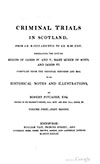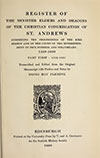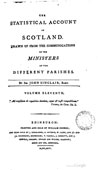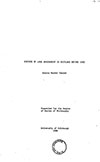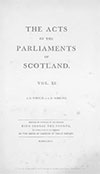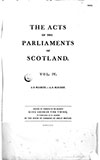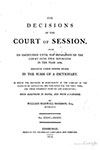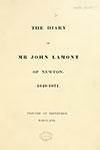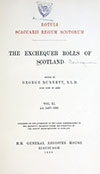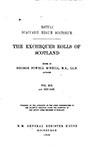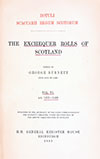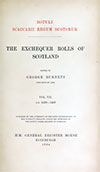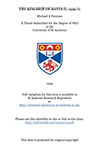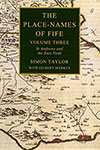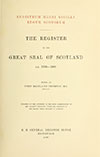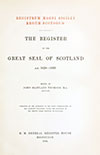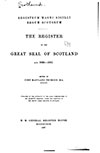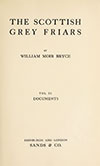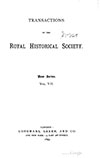

Kingsbarns Castle was a medieval castle which protected one of the granges of Crail however there are no standing remains.
Kingsbarns was one of the “occidentales granges de Karel” and was previously known as North Barns to distinguish it from East Barns and West Barns. All three were royal storehouses associated with the royal castle of Crail and were used to store harvest from the surrounding lands that were held from the Crown.
Crail Castle was a royal residence from the 12th century and in the twelfth and thirteenth centuries the lands of Kingsbarns, Crail and Carnbee seem to have been settled extensively by royal servants and minor officers of the Crown.
When the castle was built and exactly what form it took is not clear, although some clues are afforded by way of cropmarks which are visible on aerial photos. The site is located on the top edge of a slight ridge that falls away to the sea below to the north-east. A roughly semi-circular enclosure was surrounded by three concentric ditches each of which measured up to 3.0m wide, with the whole site measuring around 85.0m north-west to south-east by around 40.0m north-east to south-west.
Within the enclosed area was another semi-circular feature measuring around 25.0m in diameter. There is no clear entrance with the only break in the ditches coinciding with a later field boundary which bisects the site.
The concentric ditches make it tempting to suggest that the castle was built on the site of earlier defences, reused as a moat of sorts. In the mid-19th century it was noted that “the form of a moat is still discernible immediately above the sea-beach” however the “remains of its foundation, composed of large and massy stones, regularly laid” had been removed by the farmer a few years previously.
Around 1345 Nesome Ramsay was granted a charter of the North Barnes by David II and some time later they became a possession of the Earl of Fife. Robert Stewart, Duke of Albany and Earl of Fife, granted 20 merks from the lands of North-Bernis known as “the Kingis-bernis” to the church of St Monans. Following the forfeiture of the Duke of Albany’s son, Murdoch, in 1425 the Earldom of Fife, and Kingsbarns with it, was annexed by the Crown.
Little is written about the castle although throughout the 15th century there are references in the Exchequer rolls to wheat and barley from the farm lands of Northbernys. By 1481 or 1482 the lands of Le Kingis Barnis had been divided into sixteen parts and let to various tenants, with the surnames Lyall, Kay, Dickson, Corstorphine, Myreton or Morton, Inglis, Cawart or Calvert, Fermour or Farmer and McMorran in particular recurring.
In October 1505 John Myretoun of Randlestoune was granted remission for his involvement in the “Forcible Abduction (‘Raptus’) of Elezabeth Sym, relict of John Elder in Kingisbernys”.
In October 1561 Begis Calwart, her brother, Robert Calwart, in Kyngisbernis, William Mortoun of Cambo and Elizabath Arnot, wife of William Bowsie, baillie of Crail, were summoned to answer a charge that Begis Calwart “oppinlie injurit, diffamit, and sclanderit” Janet Bowman, wife of William Crostrophyn in Kingisbernis. The accused were ordered to attend the church of Crail on Sunday the 26th of October, confess their crimes, humble themselves on their knees and ask God and the congregation for forgiveness.
In February 1567 Mary, Queen of Scots, granted Margaret or Helen Little, the wet nurse of her infant son, the future James VI, and her husband, Alexander Gray, burgess of Edinburgh, half the lands of Kingsbarns as a pension which was to last for their lifetimes. The pension varied depending on each year’s produce but in a typical year she received 4 chalders and 8 bolls of wheat, 5 chalders and 8 bolls of barley, 60 capons or castrated cockerels, and £20. Little was apparently a favourite of James VI and he continued to grant her pension after he had succeeded his mother to the throne.
In 1593 Sir John Melville of Carnbee was denounced a rebel for not appearing to answer a charge laid on him by the tenants of “the king’s lands of Kingsbarns” for illegally constructing a mill on those lands. In January of the following year John Fermour of Kingsbarns complained to the Privy Council that after the tenants of Kingsbarns had started an action against Sir John, that Sir John, James Melville, Sir John’s cousin, Robert Betoun of Balfour, and their servants had set upon him and shot him in the head with a pistolet, leaving him for dead. Only Sir John was convicted and was merely bound over to keep the peace.
Largely the same families held the lands of Kingsbarns from the Crown into the 17th century although by this time some of the sixteenth parts of the lands had been further split into thirty-second parts. In December 1627 Charles I granted Sir James Scott of Rossie and annual pension during his lifetime of all and whole the feu ferms, feu mails, kanes, customs and duties of the lands of Kingisbarnes, with the pertinents.
In 1631 Kingsbarns parish was established as a separate entity from Crail, comprising of “the lands of Pitmillie, Mortoun of Pitmillie, mylnes thairof, Kilduncane, Falsyde, Cuikstoun, Gersmestoun, Kingisbarnes and baronie of Kippo, Cambed, Belches and Mwirhouse, Randerstoun and Newtoun”.
In July 1631 Sir James Scott of Rossie assigned to Dr David Beaton, the King’s doctor, and his wife, Ester Sallyne or Esther Saline, the life-rent of the feu-duties of the lands of Kingsbarns which extended to 4 chalders of wheat, 11 chalders of barley, £48 and 100 capons.
Little is written of the castle although a tower named Kings-Barns is marked on Blaeu’s mid-17th century map to the east of the church, suggesting that it was still extant at that time.

Joan Blaeu, Amsterdam, 1654image courtesy of NLS
Following the death of Doctor Beaton and that of Sir James Scott of Rossie Charles II granted “the mails, ferms, feu duties, found duties, kanes, customs and casualties, services and others due and payable out of the lands of Kingsbarns for three nineteen years” to Alexander Erskine, 3rd Earl of Kellie, in August 1660. The Earl of Kellie had been captured fighting for the King at the Battle of Worcester in 1651. In 1668 his brother, Sir Charles Erskine, Bt., bought the neighbouring estate of Cambo.
The grant of the feu-duties from Kingsbarns was renewed in August 1702 by Queen Mary for the Earl of Kellie’s son, Alexander Erskine, 4th Earl of Kellie. By the mid-18th century the castle seems to have been in ruins, and in the Statistical Account of 1792 it was noted that the “remains of the castle were taken down several years ago, and the stones were of an immense size.”
In the 1790s Thomas Erskine, 9th Earl of Kellie, bought the Cambo estate and the rents from the lands of Kingsbarns continued to be paid to the Earls of Kellie well into the 19th century. Some of the original families seem to have continued as portioners of their respective parts and in July 1803 the 9th Earl offered £3000 to John Corstorphine for part of his eighth part of the lands of Kingsbarns that were then occupied by John Crichton.
The 9th Earl granted the Kingsbarns Golfing Society permission to play golf on his land, at what became known as Cambo Links, however by 1844 the land had been returned to agricultural use.

Ordnance Survey, 1855image courtesy of NLS
A new golf course was laid out in 1922 however the land was again returned to agricultural use during the Second World War and land mines laid along the coast.
In the 1960s a ditch could be seen enclosing three sides of an area of high ground centred on NO 5987 1267 and may have represented the moat or ditch that was seen in the mid-19th century. Also visible at that time were the remains of a pair of gate pillars flanking a gap in a field wall at NO 5997 1267. The pillars were constructed from ashlar blocks deemed “unusually large for a normal field gate” and the wall immediately adjoining them was of mortared construction, the rest of the wall being drystone.

In October 1997 archaeological investigations were carried out to the south-east of the purported site of the castle ahead of the construction of Kingsbarns Golf Links. During the stripping of topsoil close to the site of Scheduled cropmarks that were thought to represent an oval ditched enclosure and an unenclosed settlement of prehistoric date the edge of the ditch was revealed (at NO 6019 1208). A small trench was subsequently cut across the ditch revealing it to be U-shaped in profile, around 4.5m wide and around 0.9m deep. The ditch had been filled with massive sandstones some of which were faced and it was suggested that they had come from Kingsbarns Castle.
It may be that this rather than the semi-circular enclosure surrounded by three concentric ditches to the north-west represents the site of Kingsbarns Castle with the possibility that the sites were confused with one another by early antiquarians. It is also possible that the original suggested site of the castle is the correct one but that stone from it was used at various places in the area to fill in old earthworks of varying dates. Certainly the field walls in the vicinity contain faced stones of a size not expected in a dry stane wall.

Both the semi-circular enclosure surrounded by three concentric ditches and the oval ditched enclosure have now been subsumed under the pristine, featureless grass of the golf course, and some of the field walls have disappeared under turf banks.
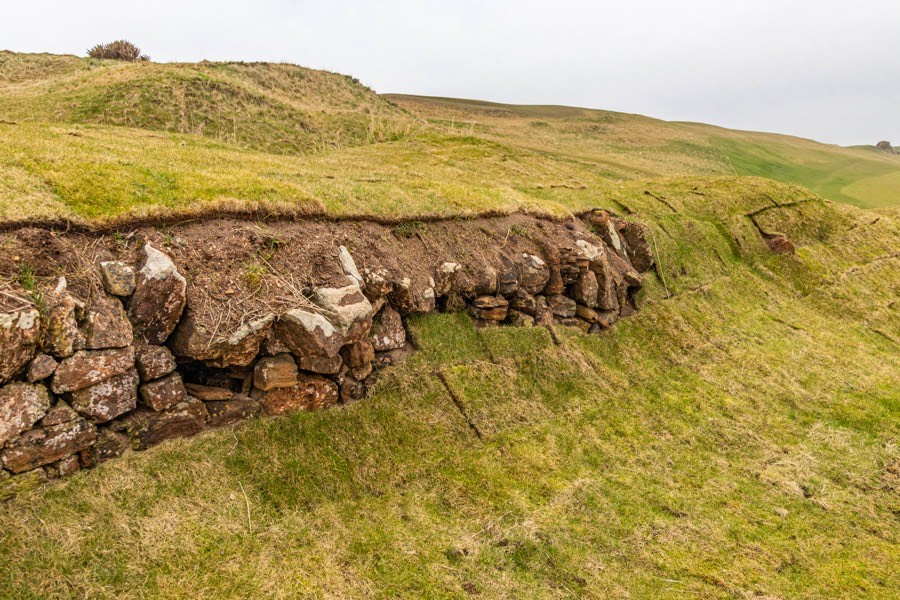
There are also numerous large, faced stones down on the beach below the castle site.
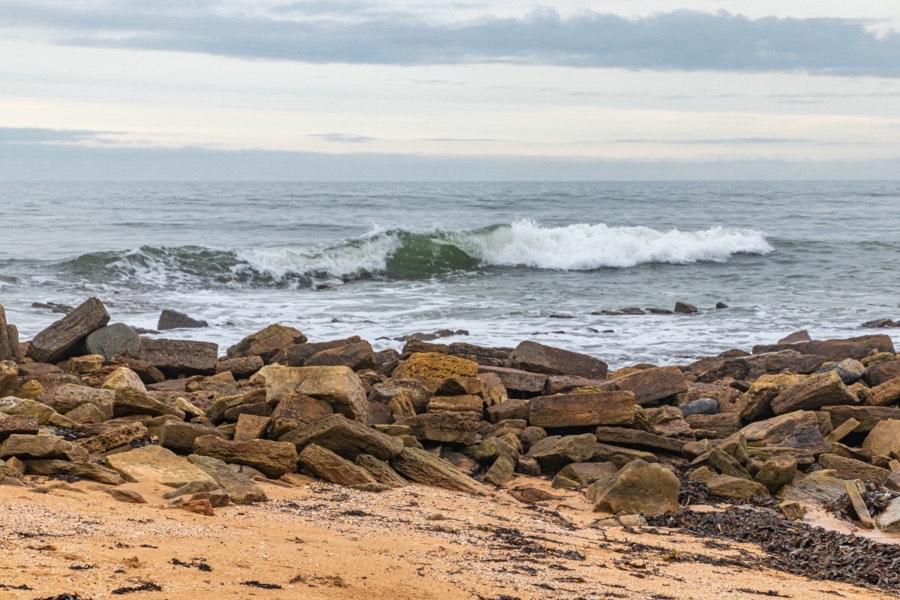
Kingsbarns harbour, which is believed to have been constructed some time after 1850, is built with similarly large, faced stones.
Alternative names for Kingsbarns Castle
Barnes; Barns; Barnys; Bernis; Bernis Regis; Bernys; Bernys Regis; Castle of Kingsbarns; King's Barns; Kingbarnis; Kingis Barnes; Kingis Barnis; Kingis Barnys; Kingis Bernis; Kingis Bernys; Kingis-barneis; Kingis-barnes; Kingis-barnnis; Kingis-Barns; Kingis-bernis; Kingisbairnes; Kingisbairnis; Kingisbarnes; Kingisbarnies; Kingisbarnis; Kingisbarns; Kingisbernis; Kingisbernys; Kings Barns; Kings-Barns; Kingbarnes; Kingsbarnis; Kingbarns; Kingsbernis; Kinsbarnis; Kyngis Bernis; Kyngis-barnis; Kyngisbarnis; Kyngisbernis; North Barnes; North Barns; North-Bernis; Northbarnis; Northbernis





